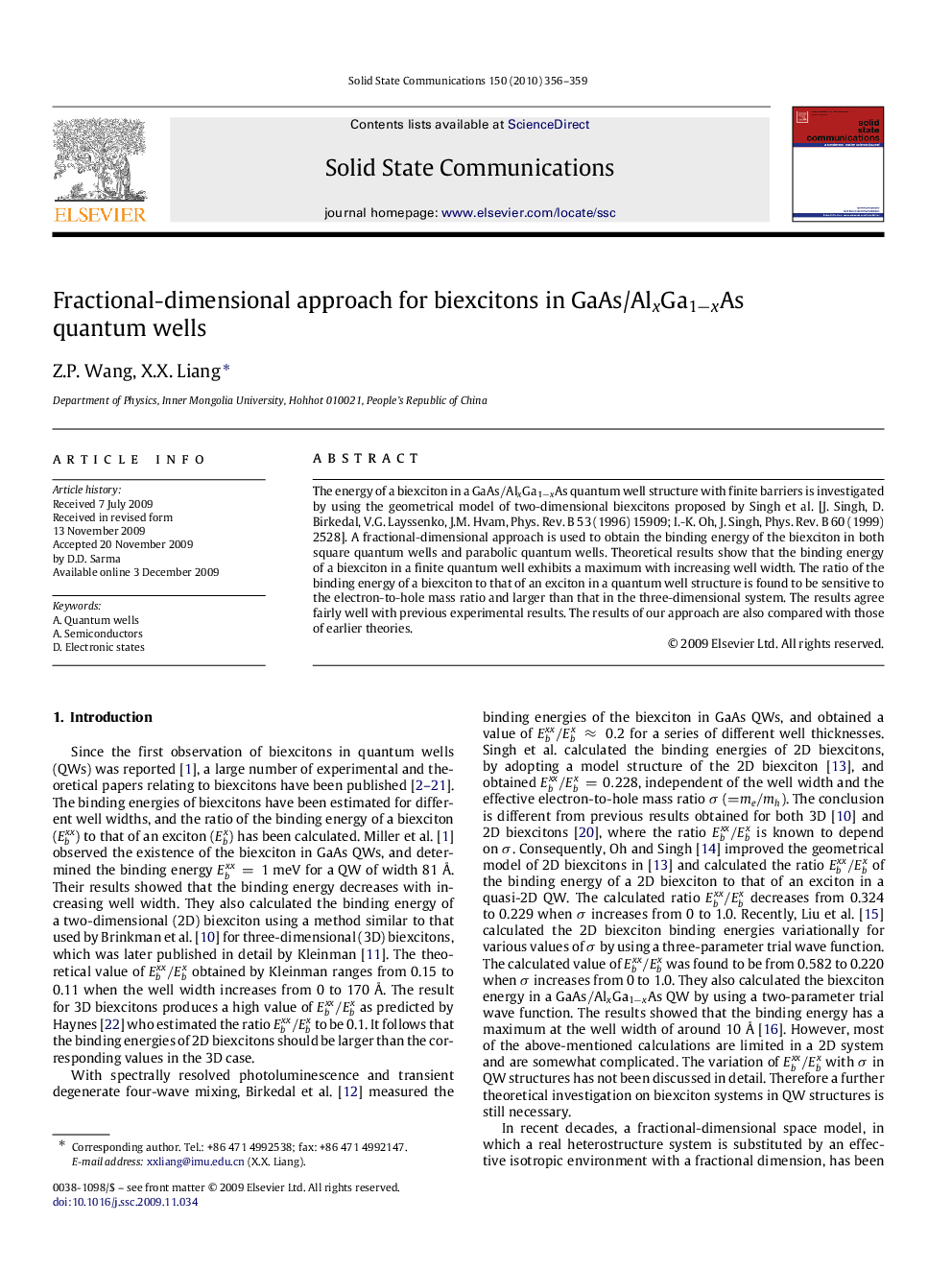| Article ID | Journal | Published Year | Pages | File Type |
|---|---|---|---|---|
| 1593472 | Solid State Communications | 2010 | 4 Pages |
Abstract
The energy of a biexciton in a GaAs/AlxGa1âxAs quantum well structure with finite barriers is investigated by using the geometrical model of two-dimensional biexcitons proposed by Singh et al. [J. Singh, D. Birkedal, V.G. Layssenko, J.M. Hvam, Phys. Rev. B 53 (1996) 15909; I.-K. Oh, J. Singh, Phys. Rev. B 60 (1999) 2528]. A fractional-dimensional approach is used to obtain the binding energy of the biexciton in both square quantum wells and parabolic quantum wells. Theoretical results show that the binding energy of a biexciton in a finite quantum well exhibits a maximum with increasing well width. The ratio of the binding energy of a biexciton to that of an exciton in a quantum well structure is found to be sensitive to the electron-to-hole mass ratio and larger than that in the three-dimensional system. The results agree fairly well with previous experimental results. The results of our approach are also compared with those of earlier theories.
Related Topics
Physical Sciences and Engineering
Materials Science
Materials Science (General)
Authors
Z.P. Wang, X.X. Liang,
